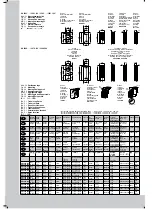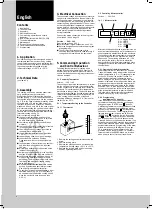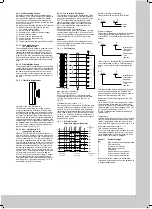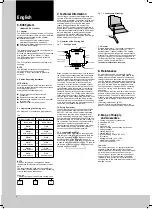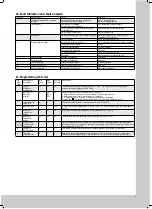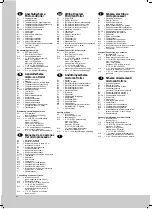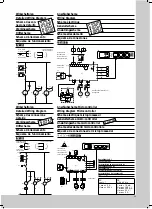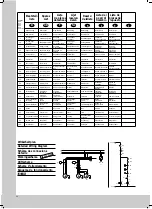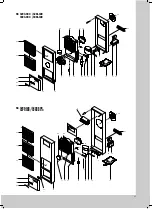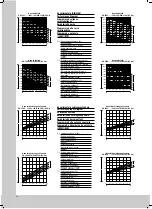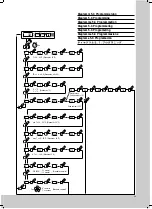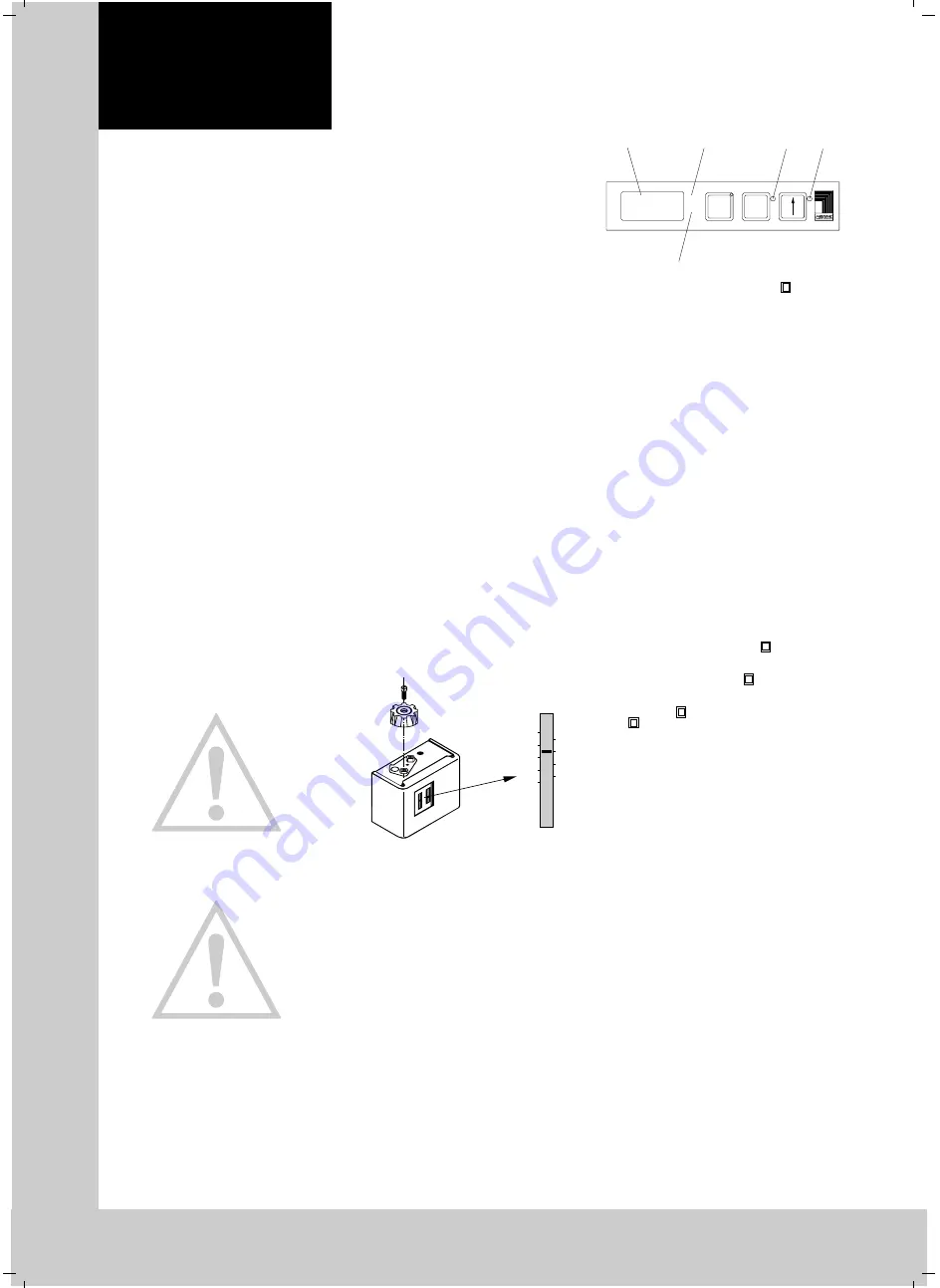
6
English
Contents
1. Application
2. Technical data
3. Assembly
4. Electrical connection
5. Commencing operation and control
behaviour
6. BUS System (Model No. SK 3124.000)
7. Technical information
8. Maintenance
9. Scope of supply and guarantee
10. Fault indication and fault analysis
11. Programming
1. Application
Enclosure cooling units are designed and built
to dissipate heat from enclosures, by cooling
the air inside the enclosure and protecting tem-
perature sensitive components. Enclosure cool-
ing units are particularly suitable for the
temperature range of + 40
°
C to + 55
°
C.
2. Technical Data
(see table 2.1)
3. Assembly
The cooling unit can be mounted either inter-
nally, partially internally or externally.
Make cutouts and drill holes at the mounting
position (see fig. 3.1). Cut the enclosed seal to
the required length and attach it to the unit (see
fig. 3.2). In the case of external mounting screw
set-screws M8 x 30 into the blind nuts at the
rear face of the unit and fix them by means of
washers A 8.4 and nuts M8. In the case of parti-
ally internal mounting the unit has to be divided
by removing the lamella grille and unscrewing
the nuts M8. For external, partially internal and
internal mounting see fig. 3.2.
Prior to mounting, ensure that:
v
the site for the enclosure, and hence the
arrangement of the cooling unit, is selected
so as to ensure good ventilation;
v
the location is free from excessive dirt and
moisture;
v
the round cut-out for air extraction is located
in the upper area of the enclosure;
v
the mains connection ratings, as stated on
the name plate, are available;
v
the ambient temperature is no higher than
+ 55
°
C;
v
the packaging shows no signs of damage;
v
the enclosure is sealed on all sides.
Condensation will occur if the enclosure is
leaky;
v
the separation of the units from one another
and from the wall should not be less than
200 mm;
v
air inlet and outlet are not obstructed on the
inside of the enclosure;
v
units are only fitted vertically in the specified
position. Max. deviation from true vertical: 2
°
;
v
condensate discharge must be made up by
means of the material provided in the dis-
patch bag. The discharge tube must be free
from kinks and must be arranged sloping
away from the unit;
v
electrical connection and repair are carried
out only by authorized specialist personnel.
Use only original replacement parts!
v
To avoid an increase in condensation, a door
operated switch (e. g. PS 4127.000) should
be used which will switch the cooling unit off
when the enclosure door is opened (see
5.2.3.3).
4. Electrical Connection
The connected voltage and frequency must corre-
spond to the values stated on the name plate. The
cooling unit must be connected to the mains via
an isolating device, which ensures at least 3 mm
contact opening when switched off. The unit must
not have any additional temperature control con-
nected before it. Line protection should be provid-
ed by means of the pre-fuse specified on the
name plate. Observe the relevant regulations
during installation!
Connect the mains connection to the plug-in ter-
minal strip X 10, see page 35.
Version . . . . .500 / .540
Door limit switch, see 5.2.3.3
v
Collective fault signal connection, see 5.2.3.1
v
Note the designations on the terminal strip (see
wiring diagram).
v
The unit must be disconnected prior to
checking the protective earth conductor, high
voltage and the insulation in the enclosure.
5. Commencing Operation
and Control Behaviour
Following the completion of mounting and a
waiting period of approximately 30 minutes (to
allow oil to collect in the compressor in order to
ensure lubrication and cooling) electrical connec-
tion can be made.
5.1 Control by Thermostat
Version . . . . .100 / .140
The cooling unit operates automatically, i.e. follow-
ing the electrical connection, the evaporator fan
will run continuously to circulate the air inside the
enclosure. This provides a uniform temperature
distribution in the enclosure. The built-in tempera-
ture controller (setting the desired internal tempe-
rature) effects automatically controlled switch-off
of the cooling unit by the value of the fixed
switching difference setting of 5 K. This is set at
the factory to + 35
°
C.
5.1.1 Temperature Setting at the Controller
Fig. 5.1
Thermostat
1. Remove the setting knob after slackening the
screw.
2. Remove locking plate.
3. Replace the setting knob and set the desired
temperature. Setting range + 20
°
C to + 55
°
C.
4. Replace the locking plate and fix the setting
knob by tightening the screw.
°C
10
20
30
8
6
4
3
°C
°C
55
60
50
45
40
35
25
5.2 Control by Microcontroller
Version . . . . .500 / .540
Fig. 5.2
Microcontroller
After electrical connection the internal fan turns on
and circulates the enclosure air. This helps assure
even temperature distribution within the enclosure.
The condensor fan and compressor are controlled
by the microcontroller. The minimum run time is
90 seconds. The switching difference is 5 – 10 K
and is set at the factory. In order to maximize
energy efficiency the thermostat should be set to
the highest enclosure temperature as allowed by
the electronics.
5.2.1 Operation of the Microcontroller
The display terminal H1 consists of a 3 position
7-segment display which indicates the enclosure
internal temperature in
°
C or
°
F (changeable, see
section 5.2.2) as well as any fault codes. The
actual enclosure internal temperature is con-
stantly displayed. If a fault occurs then the fault
number is indicated in the left position. When pro-
gramming the microcontroller the program level
and parameter value is indicated on the display.
When the “TEST” button is pushed the compres-
sor and the fans will run for 5 minutes regardless
of the internal temperature or door limit switch.
This allows for a system test after an extended
shutdown period (e.g. after the winter).
5.2.2 Programming
(see diagram 5.1 page 39)
In the EEPROM of the microcontroller various
parameters are stored which can be changed
through using the “ENTER” and “
” buttons,
9 different parameters are changeable as outlined
in table 5.1. To access the programming mode
push both the “ENTER” and “
” buttons simulta-
neously for 10 seconds. The left digit will then
indicate the program level and the LED for the
“ENTER” and “
” buttons will blink. By pushing
the “
” button the program level can be advan-
ced to the next level. In order to access levels
5 through 9 a security code must be entered. If no
buttons are pushed for 60 seconds the display will
return to the standard mode which displays the
enclosure temperature. Programming of the para-
meters is made easy with diagram 5.1 on page
39. A description of the parameters to be pro-
grammed can be found in table 5.1. All parame-
ters are stored in the EEPROM and are retained
when power is shut off to the air conditioner.
°C
TEST
ENTER
°F
H4
H5
H2
H1
H3
H1 = Display Terminal
H2 = LED
°
C
H3 = LED
°
F
H4 = LED ENTER
H5 = LED
➡
➡
➡
➡
➡



